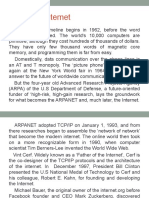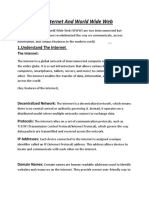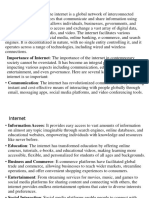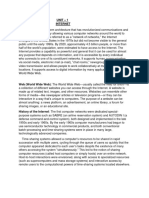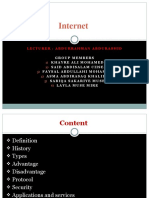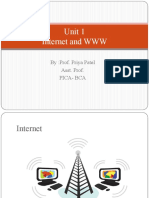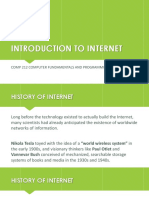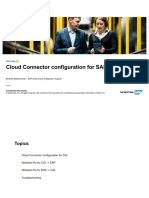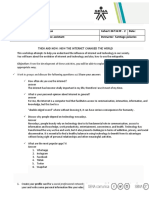0% found this document useful (0 votes)
23 views17 pagesUnit-1 Basics in Web Design
The document outlines the history of the internet, detailing its evolution from a military project in the 1950s to a global communication network, highlighting key milestones such as the establishment of ARPANET, the introduction of TCP/IP, and the rise of the World Wide Web. It also discusses the advantages and disadvantages of the internet, including its impact on communication, information access, and business, as well as risks like cybersecurity threats and misinformation. Additionally, the document explains different types of internet connections, their workings, and factors affecting speed.
Uploaded by
kartikvasava148Copyright
© © All Rights Reserved
We take content rights seriously. If you suspect this is your content, claim it here.
Available Formats
Download as PDF, TXT or read online on Scribd
0% found this document useful (0 votes)
23 views17 pagesUnit-1 Basics in Web Design
The document outlines the history of the internet, detailing its evolution from a military project in the 1950s to a global communication network, highlighting key milestones such as the establishment of ARPANET, the introduction of TCP/IP, and the rise of the World Wide Web. It also discusses the advantages and disadvantages of the internet, including its impact on communication, information access, and business, as well as risks like cybersecurity threats and misinformation. Additionally, the document explains different types of internet connections, their workings, and factors affecting speed.
Uploaded by
kartikvasava148Copyright
© © All Rights Reserved
We take content rights seriously. If you suspect this is your content, claim it here.
Available Formats
Download as PDF, TXT or read online on Scribd
/ 17











